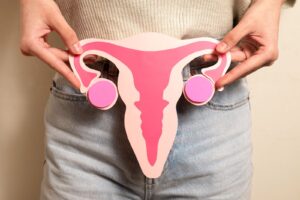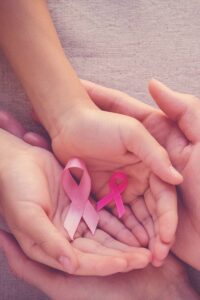Redefining motherhood: Why age is no longer a limit

This new reality serves as a reminder that women over 40 can — and do — have the option to become mothers.
For the first time in history, according to to a study from the Centers for Disease Control and Prevention (CDC), more women over the age of 40 are becoming mothers. Specifically, births among women aged 40–44 have increased by 127%, while those aged 45 and older have surged by 450%. In contrast, teen births have dramatically decreased by 73%. These striking statistics reflect a positive shift in motherhood trends and offer hope for the future, especially in light of the ongoing challenges posed by declining birth rates.
A new era of motherhood
Motherhood after 40 is an increasingly common reality for women around the world. As more women choose to postpone childbearing in favor of personal and professional development, there has been a marked rise in those becoming mothers later in life. Whereas women in their 40s were once categorized as a “high-risk age group,” advancements in medicine and assisted reproductive technologies, alongside improved healthcare access, have made motherhood at this stage safer and more attainable than ever. Additionally, enhanced sexual education, broader access to contraception, and evolving social norms that reject early motherhood as a societal obligation are reshaping the landscape. Women now have greater autonomy and control over their reproductive lives.
The link to low birth rates
Falling birth rates are a major concern in many developed countries, where the number of annual births continues to decline. However, the increase in women having children later in life presents a glimmer of hope. Although the demographic challenge persists, this trend may reflect the emergence of a more flexible and supportive environment for families. Women today can make informed choices about when and how to have children, potentially contributing to higher birth rates over the long term.
New technologies supporting motherhood after 40
Fertility can now be monitored and enhanced through a range of medical interventions, including in vitro fertilization (IVF) and egg freezing — technologies that grant women greater flexibility in planning for motherhood. Moreover, societal attitudes have become more open and accepting of older motherhood, breaking down traditional stigmas. Technological innovations have dramatically altered what is possible, enabling more women to have children well into their 40s. Key developments in the field of assisted reproduction include:
- Preimplantation Genetic Diagnosis (PGD)
- Artificial Intelligence for embryo, egg, and sperm assessment
- Egg freezing (cryopreservation)
- Donor gametes (egg and sperm donation)
Τhe future of fertility: A hopeful tomorrow
Women who become mothers in their 40s often bring greater emotional and financial stability, fostering healthier and more secure environments for their children. Research shows that children of older mothers are more likely to grow up in homes marked by calm and safety. Despite biological limitations such as reduced fertility and increased pregnancy risks, modern medical advancements are increasingly able to address these issues, enabling many women to experience motherhood later in life.
With these developments, motherhood is no longer defined by age. Women are free to pursue their personal goals and life plans while societies adapt to these new realities. Data from the CDC and other studies suggest that motherhood after 40 may be a key factor in addressing demographic challenges and offering hope for future generations. The rise in women’s labor force participation, improvements in healthcare infrastructure, and growing societal acceptance all support this emerging trend. It is therefore both timely and encouraging to recognize that motherhood has no age. The increasing number of women becoming mothers in their 40s sends a powerful message: life — and its choices — are more open and flexible than ever before. The world is evolving, and motherhood is evolving with it, shaped by the desires and needs of the modern woman.















